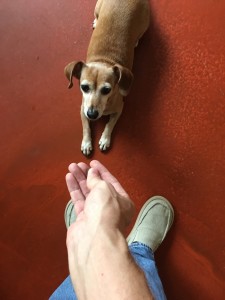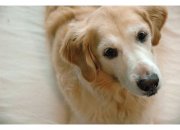Michael Baugh CDBC CPDT-KSA
I ask clients to share an online journal with me between our in-person appointments. We use Google Drive because it’s easily accessible technology. I also encourage clients to email if that is more convenient and to send videos of their progress when they can. In a perfect world, I would hear from my clients every day. Every-other-day is okay, but longer than that can be too long. Why?
- This is detail oriented work. Most of my clients are working on long-term plans to change unwanted behavior. That’s a euphemism. Their dogs lunge, growl, bark and bite. Some are dangerous. I try to roll out the plans incrementally so I don’t overwhelm the human family members or the dog. Still, it’s a lot of information. Sometimes between visits folks forget key details from the training plan (truth is, some haven’t read the training plan at all). A week between visits can be a long time. Absent those journal or email check-ins, people tend to forget the plan (that’s normal) and as a result they go off-plan. They skip details and cut corners. The training looks like it’s failing. Frequent contact, though, helps us stay on track. Details stay clear and unwanted incidents become less frequent.
- It’s economical. The detail oriented nature of this work requires that my clients and I communicate regularly. However, most can’t reasonably afford to have me out in-person every day or even every second or third day. And, quite frankly, I usually can’t budget the time required for this frequency of in-person visits. Journaling (or emailing) daily is much more economical. The time I commit to this process is woven into the cost of our in-person visits, so it’s not exactly free. But there is no additional cost. And, failing to journal is actually wasting money already spent.
- Lives are at stake. Money aside, behavior-change cases can sometimes be a matter of life or death. Dogs who bite or threaten to bite are at higher risk of being euthanized. Some are surrendered to shelters (and then euthanized there). No one wants that. Frequent communication between trainer and client helps us stay on track, attend to the details of the work we are doing, and gives us a better shot at saving the dog’s life. We are also talking about quality of life, not just for the dog but for the humans involved. I want my clients to be able to enjoy their dogs – to be able to exhale some – even as they remain committed to their long term training and behavior management plans.
 My most successful clients (and thankfully they greatly outnumber the ones who are not) communicate with me every day. When they falter, they apologize as if the journaling process were somehow for my benefit. I thank them, of course. Then I remind them that all this is for them and for their dog. I’m here on their journals and in my email box for them. My goal, when all is said and done, is their happiness – a better life and a longer life with their dogs.
My most successful clients (and thankfully they greatly outnumber the ones who are not) communicate with me every day. When they falter, they apologize as if the journaling process were somehow for my benefit. I thank them, of course. Then I remind them that all this is for them and for their dog. I’m here on their journals and in my email box for them. My goal, when all is said and done, is their happiness – a better life and a longer life with their dogs.
Michael Baugh teaches dog training in Houston, TX. He specializes in behavior change for families with dogs who bite.



